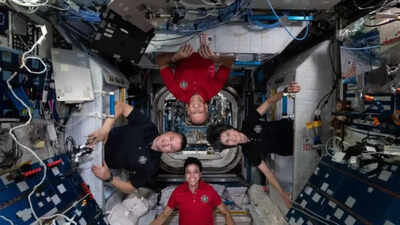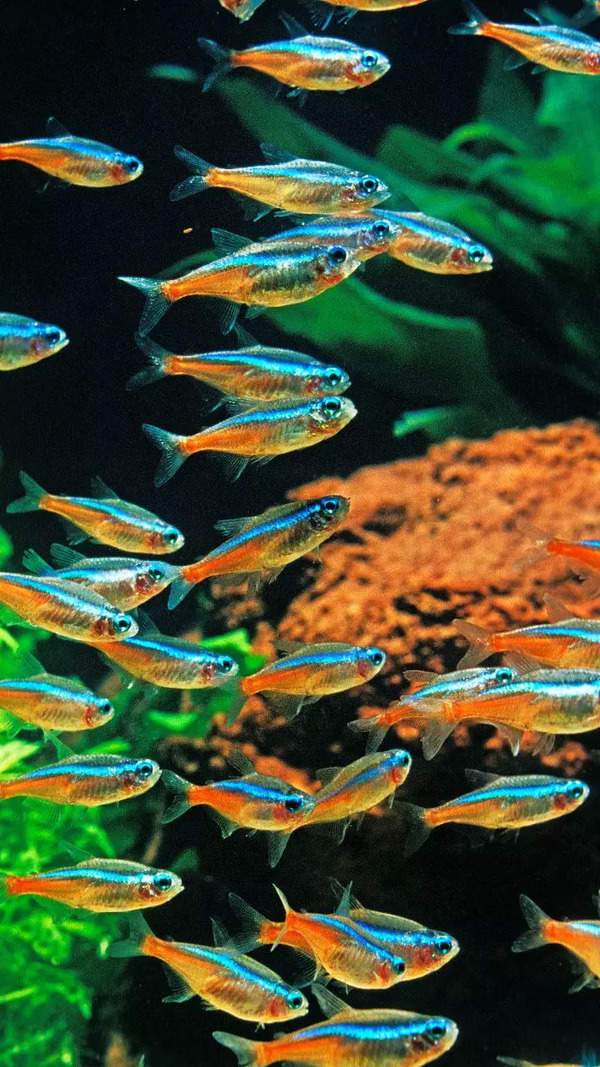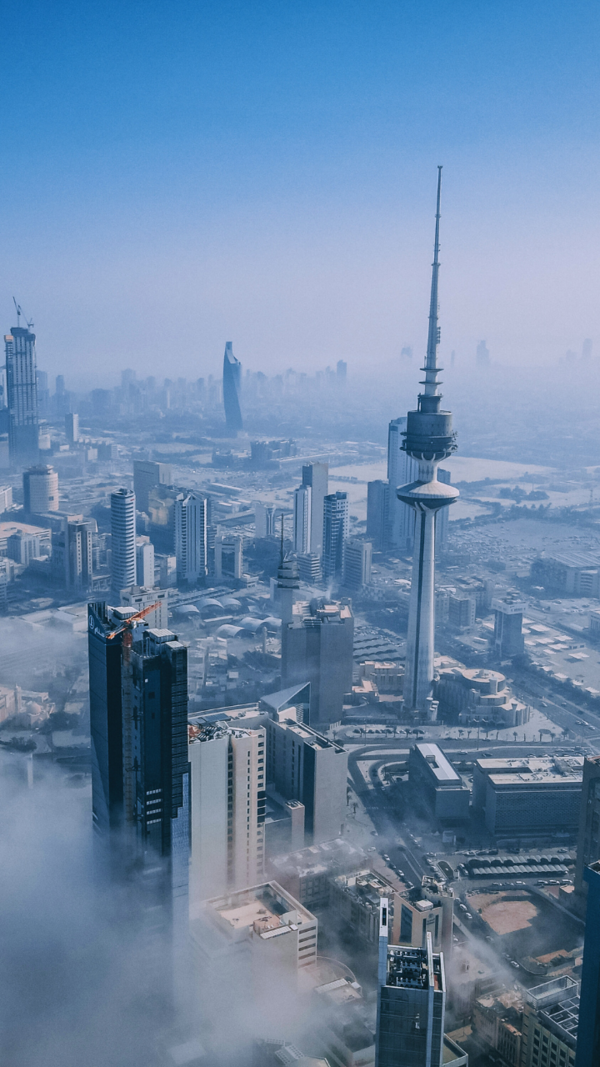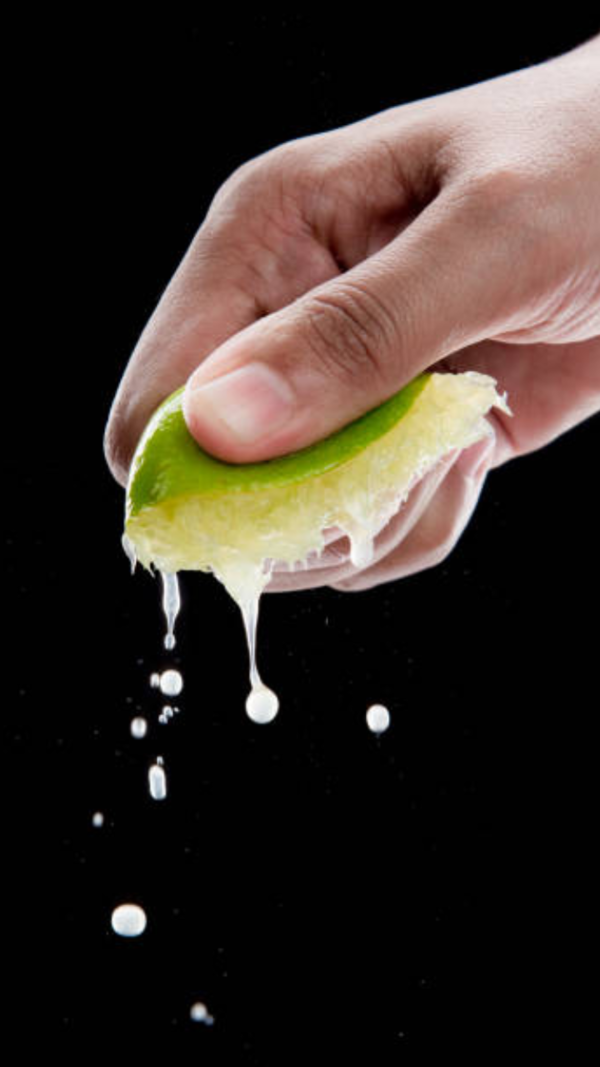- News
- lifestyle
- health-fitness
- health-news
- Small microbial ecosystem has formed on the International Space Station; Here's what it means
Trending
Small microbial ecosystem has formed on the International Space Station; Here's what it means
A new study from the University of California suggests that the International Space Station (ISS) may be too clean, potentially harming astronauts' health by lacking helpful microbes. Researchers propose incorporating more beneficial microbes to improve immune function and overall well-being for astronauts during space missions.
How much clean is too much clean?
One might ask this question, especially if they are a tad bit overzealous about cleanliness and hygiene. For those cleanliness freaks, the International Space Station (ISS) might be an ideal chilling place. However, as per scientists - contrary to popular belief - it’s not healthy at all.
What happened?
Space agencies have strict sterilisation protocols, with equipment and modules built in sealed-off clean rooms and astronauts forced to isolate before venturing into orbit.
However, a new study by the University of California and published in the journal Cell, suggests that such extreme disinfection may be doing more harm than good.
What does the study say?
Astronauts often experience immune dysfunction, skin rashes, and other inflammatory conditions while travelling in space, which has largely been put down to the impact of microgravity.
Researchers have now suspected that it could also be due to a dearth of helpful microbes.
To find out, the researchers asked ISS astronauts to swab 803 different surfaces aboard the Space Station and bring the bacterial specimens back to be studied on Earth. Compared with most of the Earth samples, the ISS surfaces had far fewer microbes and were particularly lacking in environmental bugs usually found in soil and water.
As per researchers, intentionally incorporating more microbes into the ISS could improve astronaut health without sacrificing hygiene, similar to how gardening can boost the immune system.

According to Prof Rob Knight, director of the Centre for Microbiome Innovation at the University of California, San Diego, “There’s a big difference between exposure to healthy soil from gardening versus stewing in our own filth, which is kind of what happens if we’re in a strictly enclosed environment with no ongoing input of those healthy sources of microbes from the outside.”
Many clinicians and scientists have now come to believe that modern cleanliness damages the immune system and is driving the increase in allergies, a theory dubbed the hygiene hypothesis.
The findings of the study:
After analyzing over 800 samples collected by astronauts in multiple modules of the United States Orbital Segment in the ISS, Benitez and his team concluded the microbial and chemical environment on the station closely resembled the one found at COVID-19 isolation wards during the height of the pandemic. And that may be less than ideal for keeping people healthy.
Astronauts on the ISS often suffer from various immune system dysfunctions, including allergies and skin rashes, even though they go through rigorous screening and are probably among the healthiest people on (or at least near) Earth.
According to Rodolfo Salido Benitez, a bioengineering researcher at the University of California, San Diego who co-authored the largest study on the ISS microbiome to date, “It’s hard to pinpoint the exact causes for a lot of these symptoms, but we believe microbiome disruptions that happen in their bodies and in their environment up there could be playing an important part.”
Monitoring microbial life on the ISS is an ongoing effort, and studies of this sort have been done before, although at a much smaller scale.
According to Nina Zhao, a researcher at the UCSD and co-author of the study, “Previous studies used a low number of samples that could not identify all microbial and chemical factors present up there.”
What’s the solution then?
While the research shows that the presence of microbes can be a boon instead of a bane, space travel is even more scrupulously clean, with agencies keen not to transport bugs into space where there are no medical teams on hand to help sick astronauts.

Although the ISS is due for decommission by the end of the decade, new orbiting modules, including the Lunar Gateway, are expected to be built in the coming years.
With NASA’s Artemis programme, astronauts will also be returning to the Moon to live on the lunar surface for extended periods.
Accordion to Dr Rodolfo Salido, of the Knight Lab, at UC San Diego, “Future built environments, including space stations, could benefit from intentionally fostering diverse microbial communities that better mimic the natural microbial exposures experienced on Earth, rather than relying on highly sanitised spaces.”
He added, “If we really want life to thrive outside Earth, we can’t just take a small branch of the tree of life and launch it into space and hope that it will work out. We need to start thinking about what other beneficial companions we should be sending with these astronauts to help them develop ecosystems that will be sustainable and beneficial for all.”
The researchers also found that different modules or rooms within the ISS hosted different microbial communities and chemical signatures, and these differences were determined by the module’s use.
As for example, the dining and food preparation areas contained more food-associated microbes, whereas the space toilet contained more urine- and faecal-associated microbes and metabolites.
According to co-first author Dr Nina Zhao, of UC San Diego, “We noticed that the abundance of disinfectant on the surface of the International Space Station is highly correlated with the microbiome diversity at different locations on the space station.”
In the future, the researchers hope to be able to detect potentially dangerous microbes and signals of human health from environmental samples.
What are microbes?
Microbes, also known as microorganisms, are microscopic organisms that are too small to see without a microscope. They are found in soil, water, air, and even in our bodies.

Importance of microbes:
Microbes, or microorganisms, are important for the environment and human welfare. They help with food processing, sewage treatment, and more.
Environment:
Break down organic matter: Microbes break down dead and decaying matter from plants and animals, making it available for other plants and animals.
Soil fertility: Microbes break down organic matter into humus, which increases soil fertility.
Nitrogen and carbon cycles: Microbes help with the nitrogen and carbon cycles, and generate oxygen and carbon dioxide.
Human welfare:
Food processing: Microbes help process and preserve food.
Pharmaceuticals: Microbes are used to make antibiotics, vaccines, and other pharmaceutical products.
Cosmetics: Microbes are used in cosmetics.
Sewage treatment: Microbes remove organic waste and harmful pollutants from sewage.
Gut microbiome: Microbes are part of the gut microbiome, helping animals digest food.

About the Author
TOI Lifestyle DeskEnd of Article
FOLLOW US ON SOCIAL MEDIA
Visual Stories
Tired of too many ads?








